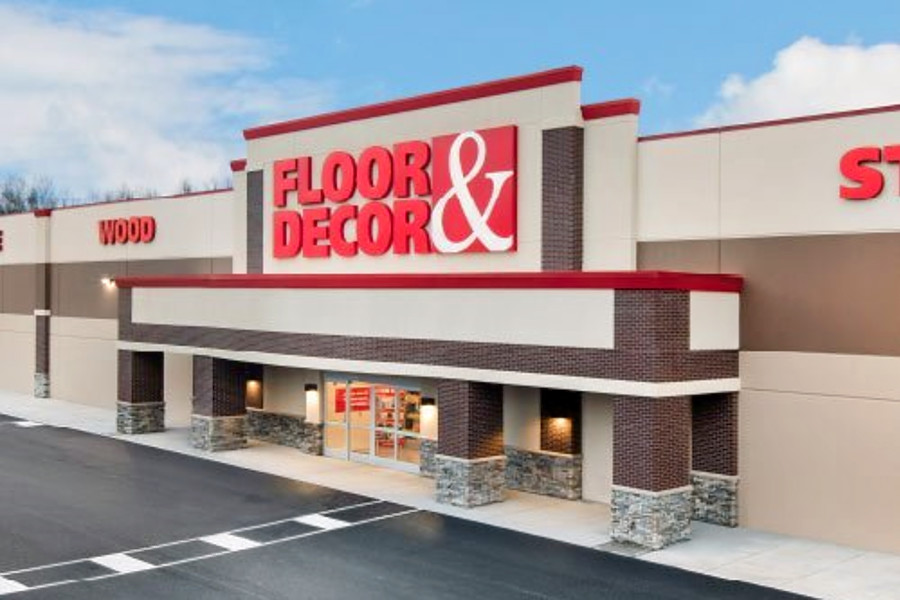Market Analysis and Competitive Landscape

Floor and decor stock – The flooring and home improvement market is a dynamic sector significantly influenced by macroeconomic factors, consumer confidence, and housing market trends. Current market conditions show a blend of challenges and opportunities, with inflation and interest rate hikes impacting consumer spending, yet a persistent demand for home renovations and improvements remains. This creates a complex landscape for companies like Floor & Decor to navigate.The competitive landscape is crowded, with a mix of large national chains, regional players, and smaller specialty stores.
Success hinges on effective strategies in pricing, product selection, and customer service.
Floor & Decor’s Main Competitors and Their Competitive Profiles
Floor & Decor faces competition from a variety of sources. Established players like Home Depot and Lowe’s, with their vast networks and established brands, pose significant challenges. These large retailers offer a wide range of home improvement products, including flooring, but often lack the specialization and breadth of selection found in Floor & Decor’s expansive showrooms. Their strength lies in their broad reach and established customer base, while a potential weakness could be perceived as a lack of specialized expertise compared to a flooring-focused retailer.
Regional competitors and smaller specialty stores often compete on localized service and potentially more personalized customer experiences. However, their smaller scale may limit their product variety and purchasing power.
Comparison of Pricing and Product Offerings
Floor & Decor differentiates itself through a value-oriented pricing strategy, emphasizing competitive pricing and a wide selection of in-stock products. This contrasts with some competitors who may focus on premium brands or higher-margin products. Floor & Decor’s vast inventory allows for immediate availability, a key advantage over competitors who might rely more heavily on special orders or longer lead times.
Their product range spans a wide spectrum of styles and price points, aiming to cater to a broad customer base, whereas some competitors might concentrate on a narrower niche.
Key Factors Influencing Demand for Flooring Products, Floor and decor stock
Several factors significantly influence the demand for flooring products. Understanding these factors is crucial for businesses in the industry to anticipate market trends and adjust their strategies accordingly.
- Housing Market Activity: New home construction and existing home sales directly impact flooring demand. A robust housing market typically translates to higher demand.
- Consumer Spending and Confidence: Economic conditions and consumer confidence levels play a critical role. During periods of economic uncertainty, discretionary spending on home improvements, including flooring, may decrease.
- Interest Rates and Mortgage Rates: Higher interest rates can make financing home renovations more expensive, potentially dampening demand. Conversely, lower rates can stimulate activity.
- Home Improvement Trends and Styles: Changing design preferences and popular trends in home décor directly influence the types of flooring materials in demand. For example, the resurgence of hardwood flooring or the increased popularity of luxury vinyl plank (LVP) can significantly shift market dynamics.
- Technological Advancements in Flooring Materials: Innovations in flooring technology, such as waterproof LVP or durable engineered hardwood, create new market opportunities and can shift consumer preferences.
Illustrative Examples of Store Design and Product Presentation: Floor And Decor Stock

Floor & Decor’s success is significantly tied to its strategic store design and product presentation, creating a compelling shopping experience that drives sales. The company’s approach emphasizes a warehouse-style aesthetic combined with sophisticated visual merchandising to showcase its vast selection of flooring and related products. This creates an environment that feels both expansive and organized, appealing to both professional contractors and DIY homeowners.The typical Floor & Decor store layout prioritizes efficient customer flow and easy product discovery.
Upon entering, customers are immediately greeted by a wide selection of flooring options displayed in large, well-lit areas. The store’s design encourages a natural progression through different product categories, guiding shoppers through various flooring types, tile sizes, and styles. This strategic layout minimizes customer confusion and maximizes browsing time, increasing the likelihood of impulse purchases.
Store Layout and Design Elements
Floor & Decor stores typically feature a spacious warehouse-style layout with high ceilings and ample natural light, creating a bright and airy atmosphere. Aisles are wide and clearly marked, allowing for easy navigation with shopping carts or large samples. Flooring displays are strategically placed throughout the store, often arranged by material type (e.g., hardwood, tile, carpet) and style (e.g., contemporary, traditional).
Each display typically includes multiple samples of the same product in different colors and sizes, allowing customers to visualize the product in various settings. The lighting is designed to highlight the textures and colors of the flooring, enhancing their visual appeal. In addition to flooring, displays also showcase complementary products such as grout, adhesives, and underlayment, strategically placed near related flooring options to encourage add-on purchases.
Overall, the atmosphere aims for a balance between a professional, warehouse feel and a welcoming, consumer-friendly environment.
Product Presentation and Purchasing Decisions
The presentation of products significantly influences purchasing decisions at Floor & Decor. Products are organized logically, often by material, then by style, and finally by color within each style. Clear and concise signage is used throughout the store to identify product categories, pricing, and relevant information. Visual merchandising techniques, such as using large, high-quality images and lifestyle displays, help customers visualize the products in their own homes.
The use of interactive displays, such as digital screens showing product applications and installation videos, further enhances the customer experience and assists in the decision-making process. Samples are readily available for customers to touch, feel, and compare, allowing them to make informed choices based on texture, color, and overall quality. The strategic placement of complementary products, such as installation tools and accessories, near related flooring options encourages add-on sales, increasing the average transaction value.
This comprehensive approach ensures that customers have all the information and resources they need to make confident purchasing decisions.
FAQ Compilation
What is Floor & Decor’s primary target market?
Floor & Decor primarily targets homeowners, contractors, and builders seeking a wide variety of flooring options at competitive prices.
How does Floor & Decor differentiate itself from competitors?
Floor & Decor differentiates itself through its vast product selection, warehouse-style stores, and focus on customer service and education.
What are the major risks associated with investing in Floor & Decor stock?
Major risks include competition from established players, economic downturns impacting the home improvement sector, and potential supply chain disruptions.
Where can I find Floor & Decor’s financial statements?
Floor & Decor’s financial statements are available on their investor relations website and through major financial data providers.


